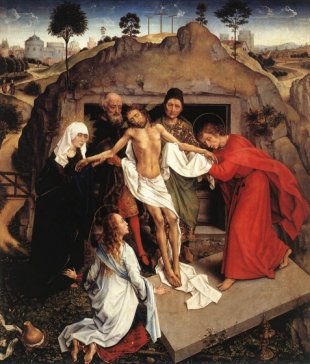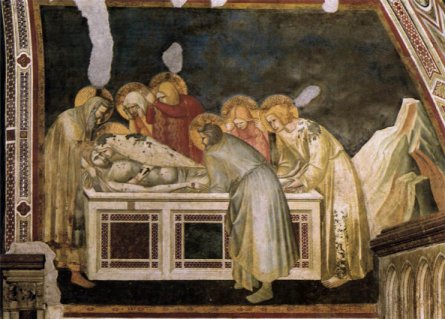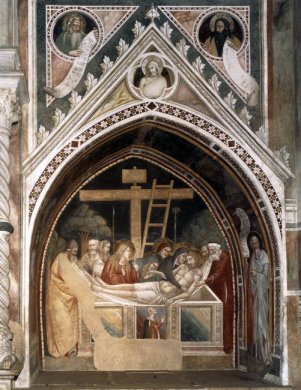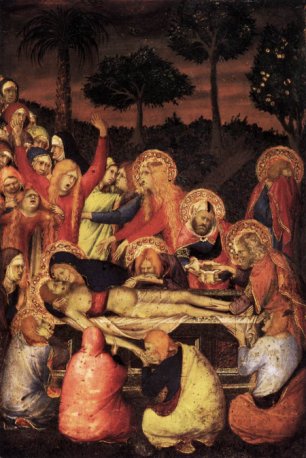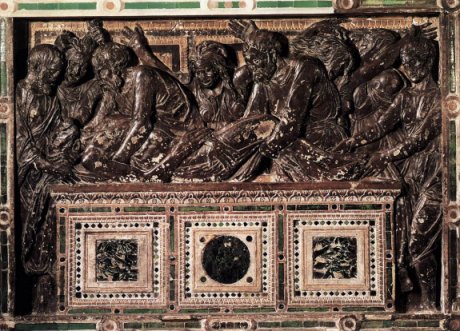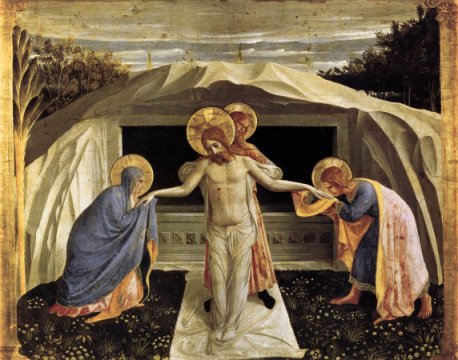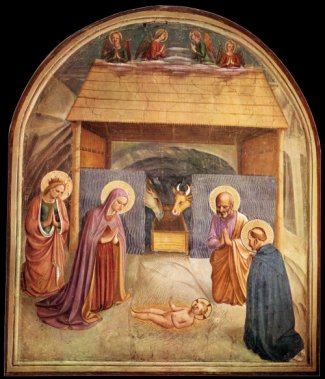|
The Passion of Christ |
|
|
The Entombment |
|
|
This is how Matthew describes the
entombment: This painting by Rogier van der Weyden illustrates the quotation rather well, though that stone would be rather difficult to roll. |
|
|
|
|
| However, most entombment images do not resemble Van der Weyden's painting or the text. Christ is placed in a sarcophagus rather than in a cave-like tomb. Here are some examples: | |
|
|
|
|
|
|
|
The change was due to the imperative to show
the tomb of Christ as an altar, the place where, in the liturgy, the bread
and wine became the body and blood of Christ. What was lost, apart
from historical accuracy, was the opportunity to parallel entombment
images with images of the beginning of the story, the Nativity. Fra Angelico managed to square the circle; his tomb is altar-like, but it is enclosed in a rock hewn tomb. Below right is his fresco of the Nativity from San Marco in Florence. To my mind, echoes of the entombment to come are unmistakeable. |
|
|
|
|
